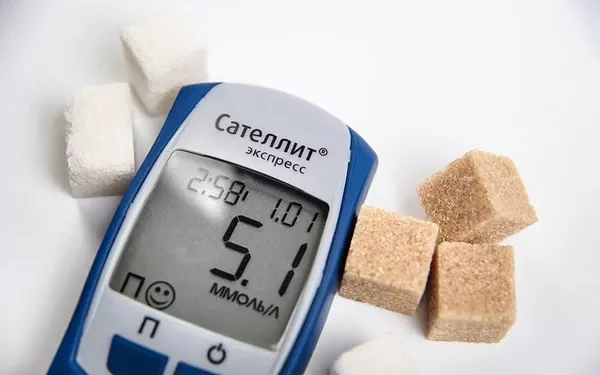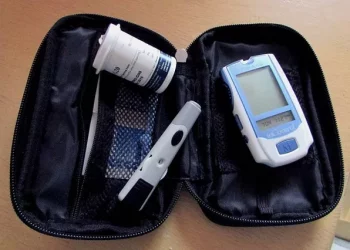For individuals with diabetes, low blood sugar, or hypoglycemia, is a condition that requires immediate attention. Recognizing the signs of low blood sugar can prevent serious complications. Hypoglycemia occurs when blood glucose levels drop below normal ranges, and it is important to be able to identify it early. In this article, we will explore the symptoms, causes, and steps to manage low blood sugar effectively.
Understanding Low Blood Sugar (Hypoglycemia)
Low blood sugar, or hypoglycemia, typically occurs when blood glucose levels fall below 70 mg/dL. This condition is especially common among people with diabetes who are taking insulin or other medications that lower blood sugar. It can also occur for individuals who skip meals, exercise intensely without adjusting their medication, or consume alcohol without eating enough food.
Why is Blood Sugar Important?
Blood sugar is the body’s main source of energy. Our body uses glucose, derived from the foods we eat, to fuel the brain, muscles, and other tissues. For individuals with diabetes, managing blood sugar levels is crucial, as both high and low blood sugar can lead to complications.
Signs and Symptoms of Low Blood Sugar
Recognizing the early symptoms of low blood sugar is essential for managing hypoglycemia. Here are some common signs:
1. Shaking and Trembling
Shaking is one of the first and most noticeable signs that blood sugar levels are dropping. The body’s reaction to low blood sugar involves the release of stress hormones, such as adrenaline, which can cause shaking or trembling, particularly in the hands. If you notice yourself shaking, it’s important to check your blood sugar levels right away.
2. Sweating
Excessive sweating is another common sign of hypoglycemia. The body releases sweat as a response to the stress caused by low blood sugar levels. This can happen even if you’re not physically exerting yourself. If sweating is accompanied by other symptoms, it is a strong indication that your blood sugar might be low.
3. Weakness and Fatigue
When blood sugar levels fall, the body doesn’t have enough energy to function properly. This can cause a general feeling of weakness or fatigue, making it difficult to perform everyday tasks. If you feel unusually tired and weak, your blood sugar levels could be dropping.
4. Irritability and Mood Swings
Hypoglycemia can also affect your mood. You might feel irritable, anxious, or confused. The brain relies on glucose to function, and when it doesn’t have enough, cognitive functions like mood regulation and decision-making can be impaired. If you suddenly feel unusually angry or upset, it could be a sign that your blood sugar is low.
5. Hunger and Cravings
As blood sugar levels drop, the body signals hunger to try to restore normal glucose levels. You might feel an intense craving for food, especially carbohydrates. If you find yourself suddenly feeling extremely hungry, it’s important to check your blood sugar levels to rule out hypoglycemia.
6. Dizziness and Lightheadedness
Low blood sugar can cause dizziness or lightheadedness. This happens because the brain doesn’t have enough glucose to function properly. When blood sugar levels drop too low, it can lead to a feeling of being unsteady on your feet. If you experience dizziness, it’s critical to check your blood sugar levels immediately.
7. Blurred Vision
In some cases, hypoglycemia can cause blurry vision. This occurs because low blood sugar can affect the fluid balance in the eyes, making it difficult to see clearly. If you suddenly notice that your vision is blurry, it may be related to low blood sugar.
8. Rapid Heartbeat
A rapid or irregular heartbeat is another symptom of hypoglycemia. When blood sugar levels drop, the body releases stress hormones, such as adrenaline, which can cause your heart rate to increase. If you experience a racing heart along with other symptoms, your blood sugar may be low.
How to Monitor Your Blood Sugar
Regular blood sugar monitoring is essential for managing diabetes and preventing hypoglycemia. Blood sugar monitoring helps you understand how different foods, activities, and medications affect your blood glucose levels. There are several ways to check your blood sugar:
1. Blood Glucose Meters
A blood glucose meter is the most common tool for checking blood sugar levels. To use a meter, you simply prick your finger with a small lancet to get a blood sample. The sample is then placed on a test strip, and the meter provides a reading of your blood sugar level. This test can be done several times a day to ensure your blood sugar is within the target range.
2. Continuous Glucose Monitors (CGMs)
Continuous glucose monitors are advanced devices that measure blood sugar levels throughout the day and night. A CGM involves wearing a sensor under the skin, which measures glucose levels in the interstitial fluid. This device provides real-time data and can alert you if your blood sugar is getting too low or too high.
3. Flash Glucose Monitors
Flash glucose monitors are similar to CGMs, but they don’t provide continuous data. Instead, you scan the sensor with a handheld device to get your current blood sugar level. These devices offer a convenient and less invasive way to monitor your blood sugar throughout the day.
Managing Low Blood Sugar
If you experience symptoms of low blood sugar, it’s important to take action quickly to prevent it from worsening. Here are the steps to follow:
1. Check Your Blood Sugar
If you suspect your blood sugar is low, the first thing you should do is check it with a glucose meter. If your blood sugar is below 70 mg/dL, you are experiencing hypoglycemia, and you should take steps to raise your blood sugar levels.
2. Consume Fast-Acting Carbohydrates
If your blood sugar is low, you need to consume fast-acting carbohydrates to bring it back to normal levels. The recommended amount is typically 15 grams of carbohydrates. Some good sources of fast-acting carbs include:
- Glucose tablets (available at pharmacies)
- Fruit juice (about half a cup)
- Regular soda (not diet) – about half a cup
- Honey or sugar – 1 tablespoon
3. Wait 15 Minutes
After consuming fast-acting carbohydrates, wait for about 15 minutes and recheck your blood sugar. If it is still below 70 mg/dL, consume another 15 grams of carbohydrates and wait another 15 minutes.
4. Follow Up with a Snack
Once your blood sugar has returned to normal, it’s important to have a small snack that includes both carbohydrates and protein. This will help keep your blood sugar stable for a longer period. Examples of a good snack include a piece of whole-grain toast with peanut butter or a small serving of Greek yogurt with some fruit.
When to Seek Medical Help
In most cases, hypoglycemia can be managed at home. However, if you experience severe symptoms, such as confusion, seizures, or loss of consciousness, it is important to seek medical help immediately. Additionally, if you are unable to raise your blood sugar levels despite consuming carbohydrates, contact a healthcare professional.
For more information on managing low blood sugar and diabetic diet tips, visit our website for expert advice.
Conclusion
Low blood sugar is a common issue for people with diabetes, and recognizing the symptoms early is key to preventing severe complications. By monitoring your blood sugar regularly and understanding the signs of hypoglycemia, you can take proactive steps to manage your condition effectively. If you ever experience symptoms of low blood sugar, remember to act quickly by consuming fast-acting carbohydrates and monitoring your levels. With proper care and attention, you can avoid the risks associated with hypoglycemia.
Related topics:
How to Check Blood Sugar Levels at Home Without Using Blood



























